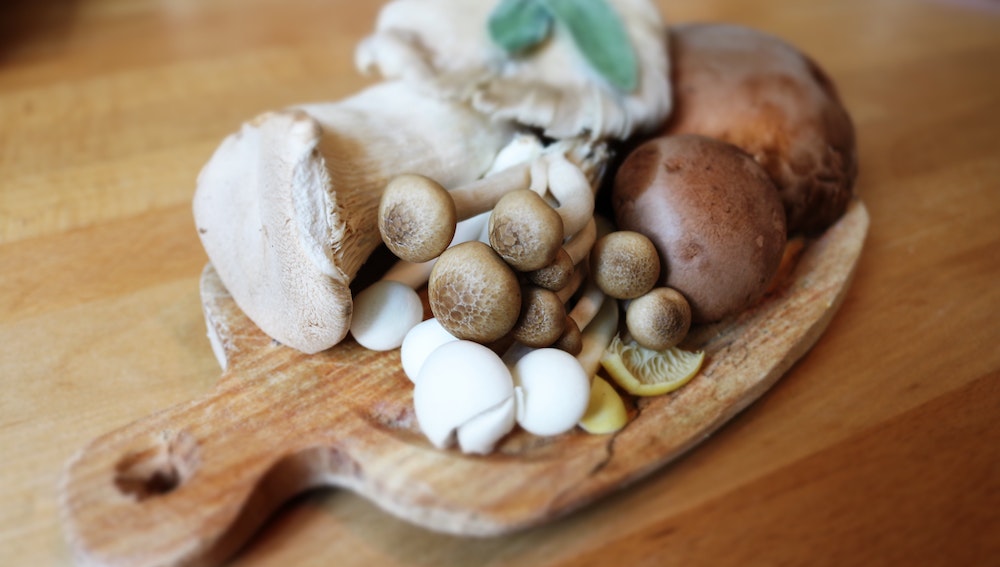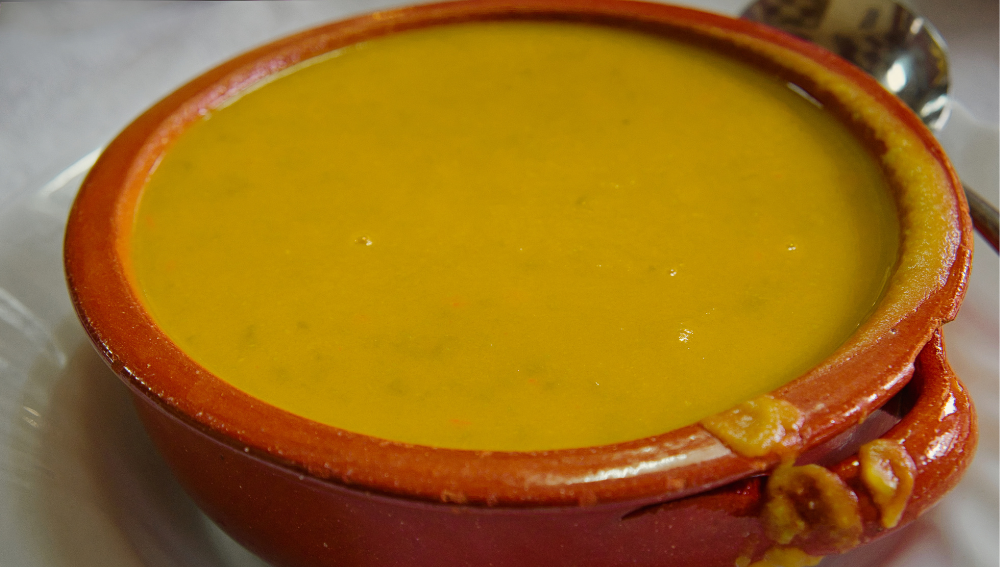Mushrooms are a fascinating and versatile ingredient that can be found in a wide range of dishes across numerous cuisines worldwide.
A common question that arises for those who haven’t had the opportunity to try mushrooms is: what does a mushroom taste like? To delve deeper and answer this query, it’s essential to gain a basic understanding of mushrooms and their distinct flavors.
Mushrooms come in a variety of shapes, sizes, and textures, each offering distinct flavors based on their type. The umami and earthy flavor profiles combined with the unique texture of mushrooms make them an exciting culinary addition.
The taste experience of mushrooms can also be influenced by different cooking techniques, from sautéeing to grilling and roasting.
Along with being packed with a range of health benefits and nutrients, mushrooms provide endless culinary possibilities – hence their growing popularity among chefs and food enthusiasts alike.
Key Takeaways
- Mushrooms offer a combination of umami and earthy flavors, with varying tastes depending on the variety
- Cooking techniques can greatly influence the taste and texture of mushrooms
- Health benefits and versatility make mushrooms a desirable ingredient in a variety of dishes
Understanding Mushroom and Its Varieties

Mushrooms are a diverse group of fungi that come in various shapes, sizes, and flavors. They are considered an excellent source of nutrients and are used in cuisines around the world.
This section will explore some of the most popular types of mushrooms and their distinctive tastes.
Shiitake mushrooms are native to East Asia and have a rich, smoky flavor. They have a meaty texture and are often used in stir-fries, soups, and other dishes.
Oyster mushrooms are another popular variety that boasts a mild, slightly sweet taste. They have a delicate texture, making them suitable for both cooked and lightly sautéed dishes.
Cremini mushrooms, also known as baby portobello or brown mushrooms, have a similar taste to white button mushrooms but are slightly more flavorful. They are versatile and work well in a range of dishes.
Portobello mushrooms are large, mature cremini mushrooms with a deeper, meatier flavor. They are especially popular for grilling and stuffing due to their large size.
Button mushrooms, or white mushrooms, are the most common type found in grocery stores. They have a mild taste and can be used in a variety of recipes, from salads to cooked dishes.
Enoki mushrooms are thin and white with a mild, slightly sweet taste. They are often used in Asian cuisine, particularly in soups and noodle dishes.
Morel mushrooms are highly prized for their unique honeycomb-like appearance and distinct earthy, nutty flavor. They are typically found in the wild and used in gourmet dishes.
Porcini mushrooms are known for their strong, nutty flavor and meaty texture. They are often used in Italian cuisine, particularly in risottos and pastas.
While there are many more varieties of edible mushrooms available, these are some of the most commonly found and utilized in the culinary world.
Each variety has its own unique taste and texture, making them a versatile and delicious ingredient worth exploring.
The Umami and Earthy Flavor of Mushrooms

Mushrooms possess a unique flavor profile that distinguishes them from other ingredients. Their taste can be described as a combination of umami and earthy flavors.
Umami, often referred to as the fifth taste, provides a savory sensation that complements and enhances other flavors in a dish. The earthy flavor present in mushrooms is subtle, adding depth and richness to their overall taste.
The umami taste in mushrooms is primarily due to their high content of glutamate, an amino acid responsible for the savory and satisfying taste. This component is also found in other ingredients such as tomatoes, cheese, and soy sauce.
The presence of glutamate in mushrooms makes them a popular choice for enhancing flavors in various dishes, ranging from soups and stews to pasta and rice dishes.
In addition to their umami taste, mushrooms also exhibit an earthy flavor that can be attributed to compounds like geosmin and 1-octen-3-ol. These compounds are typically found in soil, giving mushrooms their characteristic taste of the earth.
The intensity of the earthy flavor can vary among different mushroom species. For instance, porcini and morels have a strong earthy taste, while button mushrooms exhibit a milder flavor.
Mushrooms can be enjoyed in various ways to complement and enhance the flavors of other ingredients. Pairing them with herbs and seasonings can further elevate their taste.
For example, a combination of mushrooms with garlic and thyme imparts a delightful savory aroma, while the addition of parsley or cilantro can add a refreshing dimension to their earthy taste.
When selecting mushrooms, it is crucial to consider the desired flavor profile of the dish. For instance, shiitake and maitake mushrooms have a strong umami and earthy taste, making them suitable for bold-flavored dishes.
On the other hand, cremini and white button mushrooms have a milder flavor, perfect for subtle culinary creations.
In conclusion, the distinctive umami and earthy flavors of mushrooms make them a versatile ingredient that can enrich a variety of dishes.
Whether enjoyed on their own or combined with other flavors and seasonings, mushrooms are a culinary delight that adds a unique dimension to the taste experience.
Mushroom Texture and Its Impact on Taste
Mushrooms possess a unique and versatile texture, which contributes significantly to their overall taste. Although individual species may vary, most mushrooms have a somewhat meaty texture, making them an appealing choice for vegetarian and vegan dishes.
This meatiness is particularly notable in larger, fully-grown mushrooms like portobello or shiitake.
The meaty texture of mushrooms is mostly attributed to their high moisture content and fibrous nature. When cooked, these fibers soften, creating a satisfyingly chewy or tender quality depending on the method of preparation.
In contrast to their meaty aspect, mushrooms can also exhibit a spongy texture, especially in their raw state. This characteristic is due to the presence of air pockets within the mushroom’s structure, which collapse upon cooking, release trapped moisture, and contribute to that signature chewiness.
For those who prefer a less spongy feel, thinly sliced mushrooms or proper cooking techniques can help alleviate this issue.
Furthermore, the texture of mushrooms can vary depending on how they are prepared. For instance, sautéing or grilling mushrooms will yield a firmer, more toothsome result, while boiling or steaming will produce a softer outcome.
These different methods of preparation, along with seasoning and accompanying ingredients, markedly influence the taste experience of enjoying mushrooms.
In summary, mushrooms offer a unique combination of meaty, spongy, and chewy textures, all of which contribute to their overall taste.
By understanding the impact of texture on flavor and distinguishing the various preparation methods, one can maximize the culinary potential of these versatile fungi.
Cooking Techniques and Their Impact on Mushroom Taste

Mushrooms are a versatile ingredient that can be incorporated into a variety of dishes such as sauces, soups, pasta, salads, and rice. Their taste can vary greatly based on the cooking technique used, as well as the additional ingredients they are paired with.
One popular method of cooking mushrooms is frying, which can be done using butter or olive oil. Frying mushrooms in butter gives them a rich and creamy flavor, while olive oil provides a lighter taste.
Adding garlic and onion to the frying pan can enhance the savory flavors of the mushrooms, making them an excellent addition to various vegetable dishes.
Roasting mushrooms is another way to bring out their earthy flavor. This technique involves placing them in the oven at a high temperature for a short period of time.
Roasting mushrooms with garlic and a drizzle of olive oil can accentuate their natural taste while also adding a hint of crispiness to their texture.
Sautéing mushrooms in olive oil or butter is yet another way to cook this versatile ingredient. This method involves cooking the mushrooms quickly over high heat, which can help to retain their natural moisture and flavor.
Pairing sautéed mushrooms with vegetables, such as onions and peppers, can contribute to a satisfying and well-rounded meal.
Incorporating mushrooms into sauces and soups can also have an impact on their taste. When adding mushrooms to a sauce, it is important to consider the type of sauce and the desired consistency.
Mushroom-based sauces can range from thick and creamy to thin and brothy, and can be seasoned with various herbs and spices to enhance their flavor. Soups can also benefit from the addition of mushrooms, as they often lend a subtle yet noticeable umami taste to the dish.
To summarize, the taste of mushrooms can be greatly influenced by the cooking technique employed and the ingredients they are paired with.
Frying, roasting, and sautéing are popular methods for cooking mushrooms, each yielding a slightly different flavor profile. Additionally, incorporating mushrooms into sauces and soups can further enhance their taste and provide a satisfying culinary experience.
Health Benefits and Nutritional Profile of Mushrooms

Mushrooms are a popular choice for their unique flavor, often described as mild and brown, sometimes leaning towards sweet or sour, depending on the variety.
They are highly versatile as a culinary ingredient, featured in various dishes such as pizza, pasta, and salads. But apart from their taste, mushrooms also offer an impressive array of health benefits.
In terms of nutritional profile, mushrooms are a good source of protein and fiber. They are low in calories, making them an ideal choice for those who want to promote weight loss or maintain a healthy weight.
For example, one cup (approximately 70 grams) of raw, sliced white mushrooms contains only 15 calories.
Mushrooms are rich in a variety of vitamins and minerals, most notably vitamin D, selenium, and potassium. Many mushroom varieties, especially those exposed to ultraviolet light, are great sources of vitamin D, which is essential for maintaining strong bones and immunity.
Vitamin D is not often found in plants, making mushrooms a unique source for this essential nutrient.
Selenium is an important antioxidant that helps prevent cell damage, and it is found in high levels in many types of mushrooms. It supports the immune system and a healthy metabolism.
Similarly, potassium is vital for maintaining a proper fluid balance in the body and supporting healthy nerve and muscle function. A 100 gram serving of portobello mushrooms can provide as much as 19% of the daily value of potassium.
Mushrooms are also packed with antioxidants, which help protect the body against free radicals and oxidative stress, leading to a lower risk of chronic diseases such as cancer and heart disease.
The presence of antioxidants like ergothioneine and selenium in mushrooms is viewed as a key factor in their health-promoting effects.
Furthermore, mushrooms are low in fat and free from cholesterol. Incorporating them into a regular diet can be beneficial for maintaining good heart health.
Due to their nutrient-dense nature, mushrooms are often considered a valuable addition to any meal, providing vital nutrients without adding excessive calories or fat.
In conclusion, the mild taste and versatile nature of mushrooms make them a delicious and healthy food choice.
Rich in essential vitamins and minerals, low in calories, and packed with antioxidants, mushrooms offer a multitude of health benefits while pleasing the palate.
Mushrooms as a Versatile Ingredient
Mushrooms are a versatile and flavorful ingredient with a vast range of culinary applications. Coming in numerous varieties, their tastes range from fruity and delicate to robust and woodsy.
They can be found in many grocery stores and are an essential ingredient for chefs, vegetarians, and fungi enthusiasts alike.
The water content in mushrooms allows them to easily absorb seasonings, making them excellent for pairing with different vegetables, stews, and seafood dishes.
The distinct aroma that mushrooms produce contributes to the overall flavor profile of these dishes.
As a vegetarian staple, mushrooms are frequently used as a meat substitute because of their substantial texture.
Morels, a coveted variety of mushrooms, are particularly sought after for their unique taste and are often found in sandwiches, stews, and other recipes.
The versatility of mushrooms is highlighted by their compatibility with various cooking techniques, such as sautéing, baking, or grilling.
Their ability to maintain their shape and texture makes them an ideal ingredient for dishes that are prepared in advance, as they can withstand prolonged cooking times.
In conclusion, the vast variety and incredible adaptability of mushrooms make them an indispensable ingredient in both vegetarian and non-vegetarian kitchens.
With their unique flavors and culinary applications, it’s no wonder mushrooms continue to captivate the culinary world.
Exploring Unique Mushroom Flavors

Mushrooms come in a wide array of flavors, and their versatility makes them a popular ingredient in many dishes. They are often used as a meat substitute in vegetarian dishes, and they are low in calories, fat, and high in fiber, vitamins, and minerals such as selenium, potassium, and vitamin D.
Some of the most common edible mushrooms include shiitake, oyster, porcini, cremini, portobello, enoki, and morel mushrooms.
Shiitake mushrooms have a rich, meaty texture and a savory, umami taste. They are frequently used in Asian cuisine to add depth and flavor to dishes.
When cooked, their fruity and woodsy aroma is enhanced, making them suitable for dishes like stir-fry, soups, and stews.
Oyster mushrooms are often compared to seafood, thanks to their delicate, slightly chewy texture and mild, nutty flavor. Like shiitake mushrooms, they possess a natural umami taste, which enhances other flavors in the dish.
These mushrooms are also high in antioxidants and can be found in various dishes such as pasta sauces or vegetarian pizzas.
Porcini mushrooms are prized for their robust, nutty flavor and tender texture. They are commonly used in Italian cuisine and are a favorite of chefs globally.
Their powerful aroma and earthy taste pair well with ingredients like garlic, onion, and herbs, making them an excellent addition to risottos, pasta dishes, and sauces.
Cremini and portobello mushrooms are two varieties of the same species; the main difference is size and maturity. Cremini mushrooms, also known as baby bellas or white mushrooms, have a mild, slightly nutty flavor.
They are versatile and often found in grocery stores. Portobello mushrooms, on the other hand, are larger and more mature, with a stronger, meatier taste and a dense, spongy texture. Both varieties can be sauteed, roasted, or used as a filling in sandwiches.
Enoki mushrooms are characterized by their long, thin stems and small caps. They have a delicate taste that is slightly sweet and fruity.
The enoki mushroom’s mild flavor and crunchy texture make them a popular ingredient in salads and lighter dishes. They can be eaten raw or lightly cooked.
Morel mushrooms are sought-after wild mushrooms known for their unique, honeycomb-like appearance and earthy, nutty flavor.
They are characterized by a slightly chewy texture, which holds up well in dishes with robust sauces. Morels are commonly found in seasonal dishes, cooked with butter or olive oil to accentuate the flavors.
Although mushrooms differ in taste and texture, they share an ability to add complexity to a range of dishes. Choosing the right mushroom to complement or enhance flavors in recipes will ensure a satisfying and delicious meal.
Frequently Asked Questions
What is the flavor profile of cooked mushrooms?
Cooked mushrooms have a rich and savory flavor that is generally described as earthy and umami. Depending on the type of mushroom and the method of preparation, mushrooms can vary in taste from mild and nutty to more robust, meaty, and complex.
Cooking mushrooms, such as sautéing or grilling, can bring out these flavors and enhance their natural taste.
How does the taste of oyster mushrooms compare to other varieties?
Oyster mushrooms have a mild and delicate flavor, often characterized by a subtle sweetness and seafood-like undertones. Compared to other varieties, oyster mushrooms are less intense, making them more versatile in culinary applications.
They work well in an array of dishes, including stir-fries, soups, pasta, and others, complementing various herbs and spices without overpowering other ingredients.
What are the taste characteristics of shiitake mushrooms?
Shiitake mushrooms are well-known for their rich and smoky flavor, featuring earthy and umami notes that are both distinctive and bold.
Their texture is also quite unique, being tender yet slightly chewy, which adds an enjoyable mouthfeel to the dishes they are used in.
Shiitake mushrooms are commonly found in Asian cuisine, such as in soups, stews, and stir-fries, where they contribute depth of flavor and character.
Is the taste of cremini mushrooms similar to other types?
Cremini mushrooms, also referred to as baby bellas, are similar in taste to their mature counterpart, the portobello mushroom. They have a mild, slightly earthy flavor, which is more pronounced and assertive than that of white button mushrooms.
Cremini mushrooms are popular in various dishes, like pasta, pizza, and salads, where their subtle taste adds depth without being overbearing.
How would you describe the umami flavor in mushrooms?
The umami flavor in mushrooms is often described as savory, earthy, and meaty, which makes them an excellent ingredient for adding depth and complexity to various dishes.
Umami, often referred to as the fifth taste, is found naturally in mushrooms and contributes to their lingering, satisfying mouthfeel that leaves diners craving more.
Do any types of mushrooms have a taste similar to beef?
Certain types of mushrooms have been noted to have taste characteristics similar to beef, particularly when cooked. For example, portobello mushrooms, because of their meaty texture and earthy flavors, can be used as a substitute for beef in some recipes, such as burgers or stews.
Another example is the king oyster mushroom, which, when prepared properly, can mimic the taste and texture of meat, making it a popular choice for vegetarian and vegan dishes.







